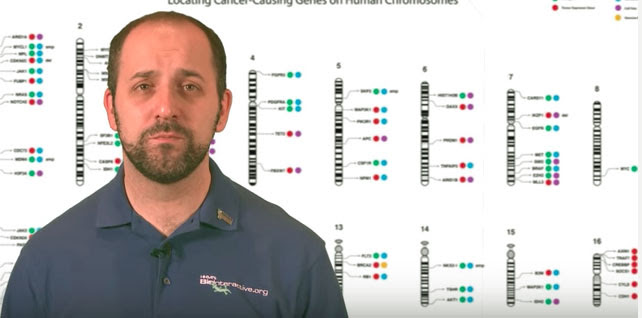|
 |
|  | |
| Connecting the Dots |
 |
In this video teacher tip, New York educator David Knuffke describes how he uses the Cancer Gene Card Activity, part of the Cancer Discovery Activities suite of resources, and how it can help to teach Mendelian genetics using an interactive, real-world example.
Do you have a favorite BioInteractive resource and want to tell us how you use it in your class? Email us the tip at BioInteractive@hhmi.org. If we feature yours, we'll send you a T-shirt! |
 HHM HHM |
|
|
|